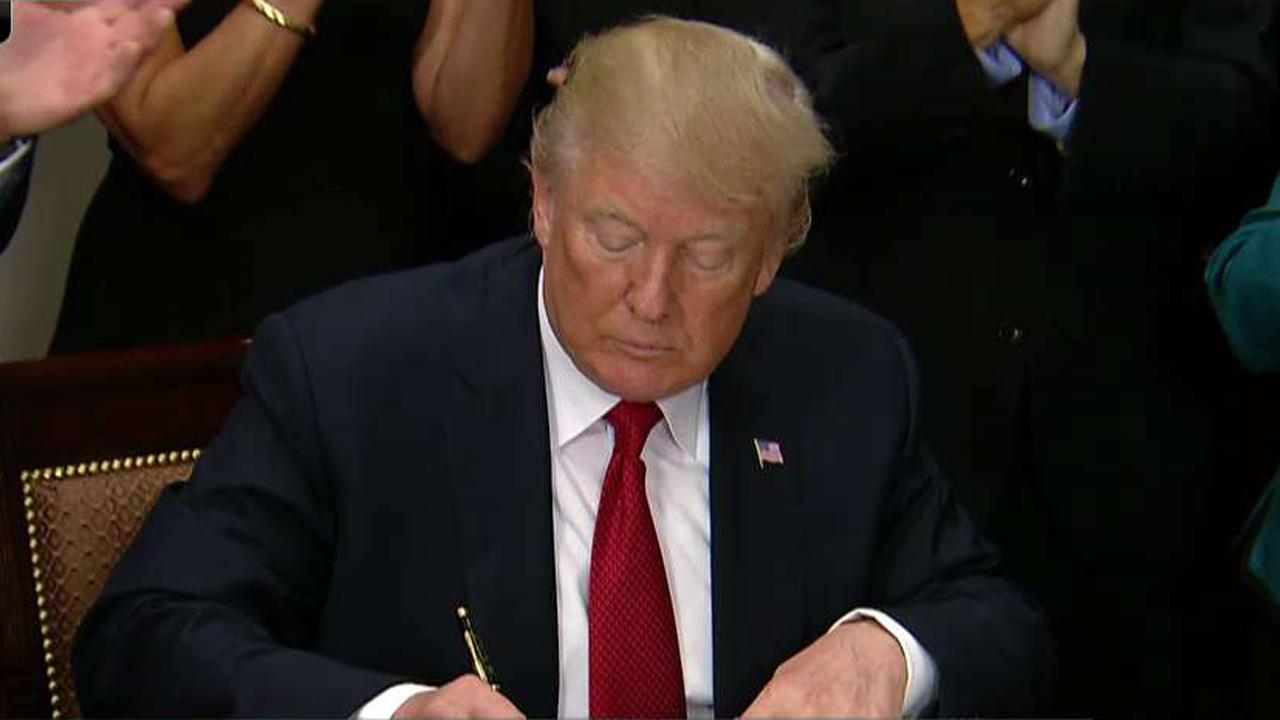Trump's health care order: What's in it?
President Donald Trump signed an executive order on Thursday, aimed at expanding access to health care coverage and bringing down related costs.
“[I am instructing the government] to take action to increase competition, increase choice and increase access to lower-priced, high-quality health care options,” Trump said.
While a White House official said on Thursday that Trump still hopes to repeal and replace the Affordable Care Act, he felt actions needed to be taken in the interim to provide relief to Americans. The GOP failed to agree on multiple plans this summer to replace President Obama’s signature health care law.
“The actions outlined are the beginning of the actions the administration will take to provide relief to the American people harmed by ObamaCare’s failure,” a senior administration official told reporters. “We expect these policy changes to potentially affect tens of millions of Americans by creating valuable and less costly options and you should expect additional actions from the administration in the months to come."
Here is how Trump’s new order aims to change the health care market.
Allow employers to form groups across state lines
In an effort to allow employers to form groups and obtain coverage across state lines, the order directs the administration to consider expanding Association Health Plans (AHPs), which allow small businesses in a similar sector or trade to band together to negotiate health benefits with other states.
This is a controversial measure and some experts predict there could be legal challenges, but supporters say it would increase competition by allowing employers to find the states offering the cheapest plans. It could also give more leverage to small businesses to negotiate policies. Additionally, the order calls for a broader interpretation of the Employee Retirement Income Security Act (ERISA), a law that regulates group plans provided by employers.
Expand short-term plans
While ObamaCare mandated that short-term insurance policies should not last for more than three months, Trump is looking to expand those plans. The order says these short-term limited duration insurance (STLDI) offerings typically cost one-third of the price of the cheapest ObamaCare plans, while featuring broad provider networks and coverage. These plans are also not subject to most ObamaCare requirements.
These policies were primarily intended for people between jobs under ObamaCare, but under Trump’s order can be used by people in counties with scarce exchange offerings and those who miss the open enrollment period. Some critics worry this could destabilize the insurance market by discouraging healthy individuals from signing up for plans on the exchanges.
Expand use of Health Reimbursement Arrangements
The administration’s order also directs the government to look into ways to expand the use of Health Reimbursement Arrangements, or tax-free accounts that allow employers to reimburse employees for medical expenses. This measure is intended to give Americans greater control over their finance and health care.
It is important to note that all of these are regulations and as such, are months away from being implemented. The administration said it hoped to put most of its proposals into effect within 6 months.
Overall impact
Trump's executive order will likely have less of an impact than critics fear and supporters hope, Michael Tanner, Cato Institute senior fellow, told FOX Business. On the plus side, it could lower premiums and increase access to lower cost coverage, he said. However, on the flip side, Tanner believes the proposals set forth in Thursday's order could exacerbate adverse selection in the health care exchanges, causing the ObamaCare exchanges to deteriorate more rapidly.




















